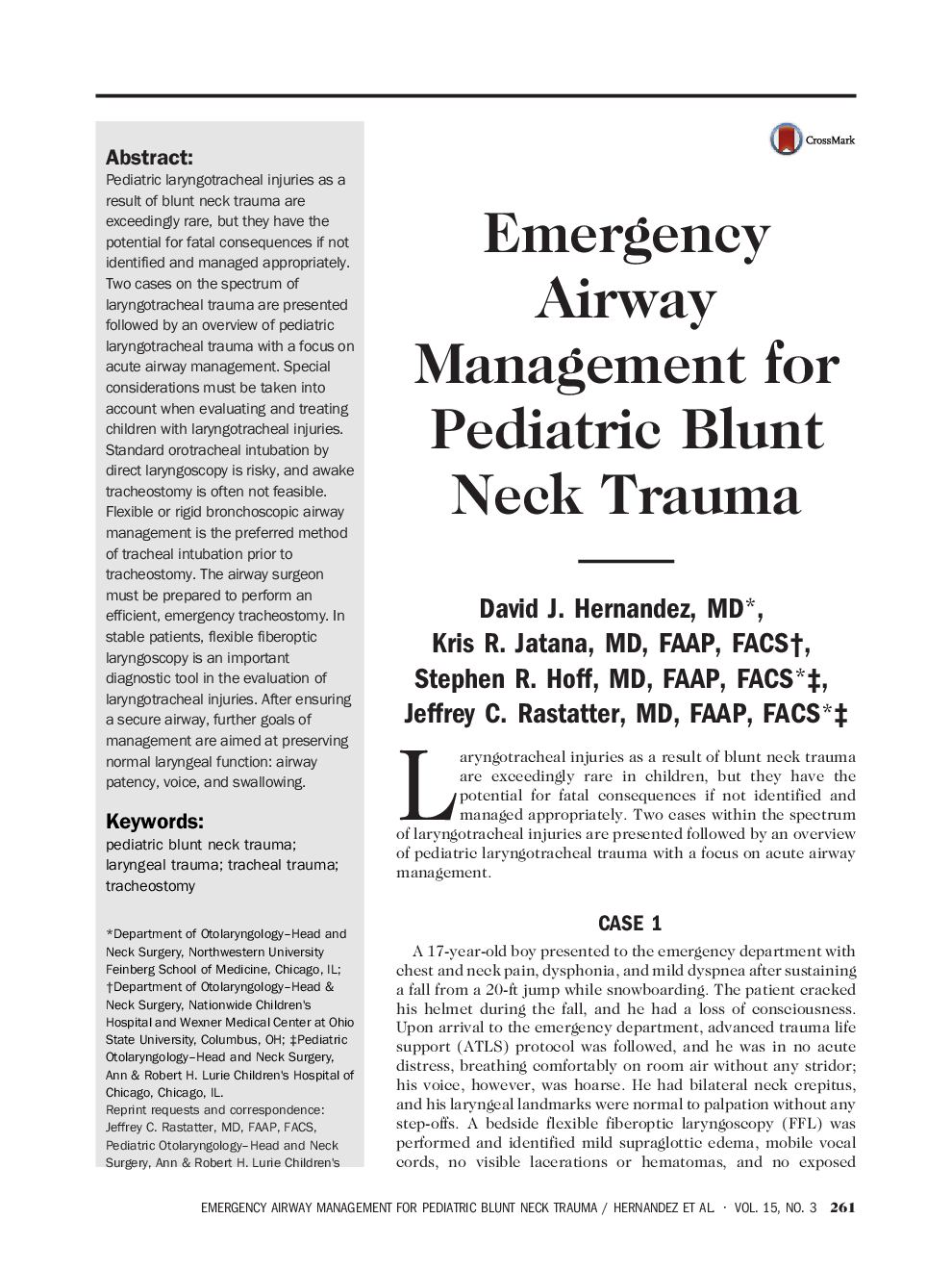| Article ID | Journal | Published Year | Pages | File Type |
|---|---|---|---|---|
| 3235892 | Clinical Pediatric Emergency Medicine | 2014 | 8 Pages |
Pediatric laryngotracheal injuries as a result of blunt neck trauma are exceedingly rare, but they have the potential for fatal consequences if not identified and managed appropriately. Two cases on the spectrum of laryngotracheal trauma are presented followed by an overview of pediatric laryngotracheal trauma with a focus on acute airway management. Special considerations must be taken into account when evaluating and treating children with laryngotracheal injuries. Standard orotracheal intubation by direct laryngoscopy is risky, and awake tracheostomy is often not feasible. Flexible or rigid bronchoscopic airway management is the preferred method of tracheal intubation prior to tracheostomy. The airway surgeon must be prepared to perform an efficient, emergency tracheostomy. In stable patients, flexible fiberoptic laryngoscopy is an important diagnostic tool in the evaluation of laryngotracheal injuries. After ensuring a secure airway, further goals of management are aimed at preserving normal laryngeal function: airway patency, voice, and swallowing.
